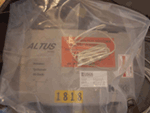More than two years after road access and electrical power to the Mauna Loa Observatory was cut off by lava flows, NOAA staff continue to make critical measurements of the atmosphere and other environmental variables at the remote site.
In 2023, observatory staff installed solar panels at the site and resumed some measurements, including the independent carbon dioxide monitoring programs run by the Global Monitoring Laboratory and Scripps Institution of Oceanography, as well as other atmospheric measurements.
Construction of a temporary road to access the observatory site is anticipated to begin in summer 2025.
Media can contact: Theo Stein (303) 819-7409 (theo.stein@noaa.gov)
Organization(s):
![]() US Department of Interior , US Geological Survey / Hawaiian Volcano Observatory
US Department of Interior , US Geological Survey / Hawaiian Volcano Observatory
What does this program measure?
USGS & HVO Operate digital telemetry receiver and repeater equipment for monitoring seismic and other activity from the flanks of Mauna Loa Volcano. Signals from the western and northern parts of Hawaii Island will be collected at Mauna Loa Observatory and relayed to the Hawaiian Volcano Observatory in Hawaii National Park.
How does this program work?
A computer will collect data from remote sites via the 5.8 GHZ radio. The data from the computer will be transmitted to the Hawaiian Volcano Observatory via the internet. Instruments include digital telemetry receiver and repeater equipment, operating continuously at MLO.
Why is this research important?
To monitor activity from the flanks of Mauna Loa Volcano and collect signals from the west and north parts of Hawaii Island.
Are there any trends in the data?
How does this program fit into the big picture?
What is it's role in global climate change?
Comments and References
Lead Investigator(s):
Paul Okubo
808-967-8802
MLO Contact(s):
Dr. John E. Barnes
808-933-6965 (x222)
Darryl Kuniyuki
808-933-6965 (x236)
Web Site(s)
Date Started
1997
Related Programs
USGS/HVO Tilt and Strain
Volcanic Activity


